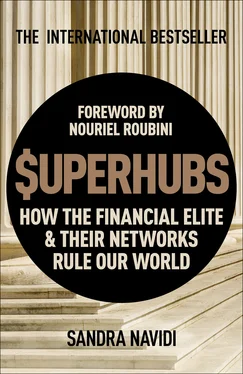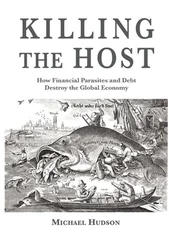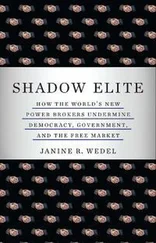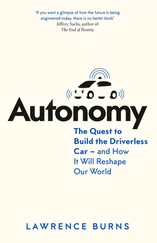Sandra Navidi - SuperHubs - How the Financial Elite and Their Networks Rule our World
Здесь есть возможность читать онлайн «Sandra Navidi - SuperHubs - How the Financial Elite and Their Networks Rule our World» весь текст электронной книги совершенно бесплатно (целиком полную версию без сокращений). В некоторых случаях можно слушать аудио, скачать через торрент в формате fb2 и присутствует краткое содержание. Год выпуска: 2017, Издательство: Hodder & Stoughton, Жанр: Старинная литература, на английском языке. Описание произведения, (предисловие) а так же отзывы посетителей доступны на портале библиотеки ЛибКат.
- Название:SuperHubs: How the Financial Elite and Their Networks Rule our World
- Автор:
- Издательство:Hodder & Stoughton
- Жанр:
- Год:2017
- ISBN:нет данных
- Рейтинг книги:4 / 5. Голосов: 1
-
Избранное:Добавить в избранное
- Отзывы:
-
Ваша оценка:
- 80
- 1
- 2
- 3
- 4
- 5
SuperHubs: How the Financial Elite and Their Networks Rule our World: краткое содержание, описание и аннотация
Предлагаем к чтению аннотацию, описание, краткое содержание или предисловие (зависит от того, что написал сам автор книги «SuperHubs: How the Financial Elite and Their Networks Rule our World»). Если вы не нашли необходимую информацию о книге — напишите в комментариях, мы постараемся отыскать её.
SuperHubs: How the Financial Elite and Their Networks Rule our World — читать онлайн бесплатно полную книгу (весь текст) целиком
Ниже представлен текст книги, разбитый по страницам. Система сохранения места последней прочитанной страницы, позволяет с удобством читать онлайн бесплатно книгу «SuperHubs: How the Financial Elite and Their Networks Rule our World», без необходимости каждый раз заново искать на чём Вы остановились. Поставьте закладку, и сможете в любой момент перейти на страницу, на которой закончили чтение.
Интервал:
Закладка:
The Financial System: Applying the Lens of Network Science
What do the brain, ant colonies, and the financial system have in common? They are all complex self-organizing systems. The brain is a network consisting of billions of neurons connected by synapses that cooperate with one another in a way that creates consciousness.1 The brain does not have a master cell that tells it how to work—it self-organizes out of millions of electrical and chemical interactions. Another example is ant colonies, which function on the basis of collective, decentralized behavior. An individual ant, through communication with other ants, receives instructions on how to behave. There is no “leader-ant” that determines the dynamics of individual interactions or the colony as a whole; together, all ants contribute to a well-functioning and efficient system.2
By the same token, in the global financial system, the actions of autonomous individuals lead to collective activity. Who are the players in this system? They are executives at financial institutions, such as banks and investment funds; leaders of public-sector institutions, such as central banks and the International Monetary Fund; and many other formal and informal actors who interact in complex transactions across national borders. There is no global “central command” that determines how the system works. It self-organizes out of countless connections, interactions, and decisions.
Decision makers influence the system’s dynamics with their actions, but they have no control over the system itself. No one person can change the price of commodities or the fluctuations of the global economy. But by their interconnections and interactions, they produce large-scale effects. For example, the individuals who lead major financial institutions have enormous network power. At the same time, they are subject to systemic forces and governing rules. Essentially, the “game” of finance has rules that influence how they play. In turn, the way they play impacts the rules and the nature of the game itself.
The Human Factor: The Power of Personal Connections
Previous analyses of the financial system and its risks have focused primarily on the interconnectedness of financial institutions, the validity of macroeconomic theories, and the power of quantitative models, while giving less consideration to the networks of people who preside over the institutions that comprise the system. Yet, in the end all comes down to people, because it is they, not abstract entities, who make decisions on institutions’ behalf, who devise theories and decide which models to use. This human dimension adds another level of complexity, because the dynamics of human relationships that result in seemingly amorphous and elusive networks, are not strictly formulaic, and difficult to quantitatively measure.
However, since human networks are also subject to the laws of network science, we can use these laws to help us understand how relationships form and how they are structured. A better understanding of those who have the greatest influence on the system and their connections to each other will help us understand the system itself.
Network science explains the organizational structure of all systems.3 It has gained popularity in recent years, mainly because of the growing importance of social networks. But it can also help explain how some investors have made billions of dollars, such as hedge fund superhubs George Soros and John Paulson. Or why it seems like no one has been held accountable for the events or decisions that led to the Great Recession.
In network science, “[it’s] the pattern that matters, the architecture of relationships, not the identities of the dots themselves.”4 The key players understand that the ultimate competitive advantage relies on the extent and depth of personal bonds and alliances—the network of links or connections that gives a person influence. They understand the system itself, the complex relationship architecture, and the “magic formula” of developing powerful connections. From their superior perspective, they can see how their networks provide them with unprecedented opportunities, resources, and support, and thus a greater ability to influence the system as a whole. The better they understand it, the more successful they are within it. This is exactly why we should try to understand it, because, as Douglas Rushkoff poignantly notes, “If you don’t know how the system you are using works, chances are the system is using you.”5
Hence, we will take a look at the financial world through the prism of networked systems, because our interconnected world requires a more comprehensive perspective. Technologization, financialization, and globalization have created an intricate web of interconnections within the financial world itself and between the financial world and other sectors such as the economy and politics. While new linkages are formed at an unprecedented speed, our capacity to fully grasp the resulting complexity has not quite caught up with the new system we have created—as was evident in the miscalculation of the impact of Lehman Brothers’ failure or the challenges of dealing with the eurozone crisis.
Introduction: Meet the “Superhubs”
Davos epitomizes the principles of network science as they apply to human beings. These meetings tangibly demonstrate that similar people attract each other—and that those who already have the most connections attract even more. The Davos success formula? The resort is hard to reach, isolated, and difficult to navigate. Deprived of their usual environments, infrastructure, and privileges, leaders are crammed into a vacuum with nowhere else to go. Constantly caught in bottlenecks of security controls, coat checks, bus lines, and traffic jams, they have no choice but to become engaged in conversation. You literally cannot escape mingling, and it is this inefficiency that actually drives the über-efficient networking dynamics. Other conference organizers have tried to compete with similar concepts, yet so far none have succeeded.
In Davos, the movers and shakers are relaxed and completely approachable, ready to casually mingle and strike deals in the hallways that will make headlines shortly thereafter. More than half of the attendees participate as speakers and panelists, and they—along with their audiences—bond over shared experiences. Many participants take advantage of the opportunity to hold informal bilateral meetings over a cup of coffee or in one of the designated private meeting rooms off the main corridors. Serendipity often creates the most valuable opportunities. You may run into a person who is or could be immensely important for your business, receive an invite to a circle that was previously inaccessible, or have a conversation that opens up new perspectives. At a recent Davos, I was sitting in the Congress Centre café when an unfamiliar man asked if he could join my table. Of course, I said yes, and eventually he was joined by two billionaires and two prominent fund managers. Thirty minutes later, I had made five new contacts.
Parties hosted by countries, companies, and individuals add an extra layer of networking benefit to the forum. Every year, JPMorgan hosts a glamorous cocktail reception at the Kirchner Museum opposite the baronial Belvédère Hotel and just minutes from the convention center. Even amongst the events in Davos there is a hierarchy, and this stylishly catered affair is considered a must-attend. At the entrance, JPMorgan’s top brass forms a receiving line, which in the last few years has included Tony Blair, the former prime minister of Great Britain. Blair is a highly desired “anchor” who draws other influential guests. At the head of the receiving line is CEO Jamie Dimon, who graciously shakes hands with several hundred high-caliber guests in a row for three hours nonstop. He shines, poses for pictures, and engages in lively conversations. Meanwhile, guests roam around with their eyes set not so much on the extraordinary expressionist artwork but on the other attendees. Here, Ehud Barak, the former Israeli defense minister, mingles with the president of Iceland, Ólafur Ragnar Grímsson; private equity tycoon Steve Schwarzman; Russian oligarch Oleg Deripaska; and many of the more than one hundred billionaires of all nationalities at the WEF. This is a microcosm of the world’s elite, and everyone eagerly takes advantage of the opportunity to meet with as many peers as possible.
Читать дальшеИнтервал:
Закладка:
Похожие книги на «SuperHubs: How the Financial Elite and Their Networks Rule our World»
Представляем Вашему вниманию похожие книги на «SuperHubs: How the Financial Elite and Their Networks Rule our World» списком для выбора. Мы отобрали схожую по названию и смыслу литературу в надежде предоставить читателям больше вариантов отыскать новые, интересные, ещё непрочитанные произведения.
Обсуждение, отзывы о книге «SuperHubs: How the Financial Elite and Their Networks Rule our World» и просто собственные мнения читателей. Оставьте ваши комментарии, напишите, что Вы думаете о произведении, его смысле или главных героях. Укажите что конкретно понравилось, а что нет, и почему Вы так считаете.












